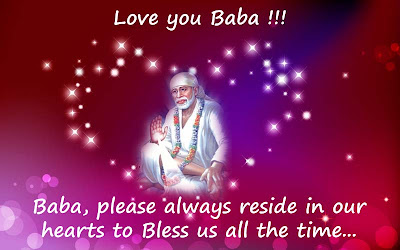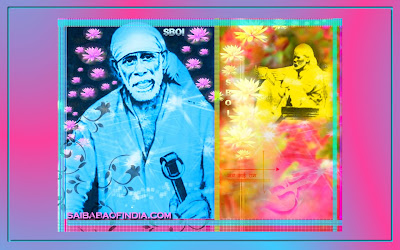Introduction
Ramnavami is a significant festival celebrated in Shirdi, a small town located in the Ahmednagar district of Maharashtra, India. The town is known for its association with the revered saint Sai Baba, who is believed to have lived in Shirdi for over 60 years. Sai Baba’s Teachings and Miracles have attracted a large number of followers over the years, and His Samadhi (final resting place) in Shirdi is considered a sacred site by His devotees.
The celebrations of Ramnavami in Shirdi started during Baba’s lifetime, and it is celebrated for three days. The festival usually falls in the Hindu month of Chaitra, which typically falls in March or April. It is celebrated with great enthusiasm and devotion by the devotees of Sai Baba.
According to the Shri Sai Satcharitra, a holy book that chronicles the life and teachings of Sai Baba, the celebrations of Ramnavami began during Baba’s lifetime.
Chapter 6 of Shri Sai Satchritra narrates the origin and evolution of the Urus festival in Shirdi, a town in Maharashtra, India, which is now known as the Rama-Navami Festival. The festival began in 1897 when a devotee of Sai Baba, Gopalrao Gund, had a son and decided to celebrate by organizing a fair or Urus in Shirdi. He discussed the idea with other Shirdi devotees, including Tatya Patil, Dada Kote Patil, and Madhavrao Deshpande (Shama), who approved of it and sought Sai Baba’s permission and blessings.
The group submitted an application to the Collector for permission to celebrate the Urus, but the request was denied due to opposition from a village official. However, the group persisted and eventually obtained the Collector’s sanction. They fixed the day for the Urus on Rama-Navami, after consultation with Sai Baba. The festival aimed to unify the two communities in Shirdi – Hindus and Muslims – by bringing their respective fairs or festivals together.
Despite obtaining permission, there were many challenges in organizing the festival. Shirdi was a small village with limited water resources, and they had to construct temporary shops and arrange wrestling bouts. To complicate matters, there was a scarcity of water, and the main well in the village dried up quickly, leaving only a brackish well. However, Sai Baba intervened by throwing flowers into the brackish water and turning it into sweet water. Tatya Patil arranged to get water from a distant well to meet the festival’s water needs.
Another devotee, Damu Anna Kasar, prepared a simple flag for the procession, and Mr. Nanasaheb Nimonkar provided an embroidered flag. The flags were taken in procession through the village and fixed at two corners of the Masjid, where they remain to this day.
A Sandal procession, in honor of great Muslim Saints, was also started during the fair. The idea for the procession originated with Mr. Amir Shakkar Dalal, a Muslim devotee from Korhla. The procession involved carrying sandal paste and scrapings on a flat dish, with incense burning in the dish, through the village with music playing in the background. The contents of the dishes were then applied on the Nimbar (niche) and walls of the Masjid by hand. This work was initially managed by Mr. Amir Shakkar and later by his wife.
The fair grew in importance each year and was gradually transformed into the Rama-Navami Festival. In 1912, a devotee named Mr. Krishnarao Jageshwar Bhisma came to the fair with Dadasaheb Khaparde of Amraoti and proposed that the festival be renamed the Rama-Navami Festival to celebrate the birth of Lord Rama. Kaka Mahajani, another devotee, liked the idea, and they sought Sai Baba’s permission. Sai Baba agreed, and the festival has been celebrated as the Rama-Navami Festival ever since.
Radha Krishna Mai, a female devotee of Sai Baba, took care of the internal management of the festival, including cleaning and whitewashing the Masjid. She cooked on a grand scale and prepared various sweet dishes to feed the poor, which was a favorite activity of Sai Baba. Wealthy devotees also played a leading role in the process.
In conclusion, the Urus festival in Shirdi, which began in 1897, was transformed into the Rama-Navami Festival in 1912 to celebrate the birth of Lord Rama. The festival aimed to unify the Hindus and Muslims of Shirdi and has been celebrated with great enthusiasm and devotion ever since. The Rama-Navami Festival in Shirdi is a symbol of communal harmony and peaceful coexistence. It is a testimony to the fact that people of different religions and faiths can come together and celebrate their diversity. The festival is not just a celebration of Lord Rama’s birth, but also a celebration of the spirit of oneness and brotherhood. It serves as a reminder to all of us that we are all part of one human family, and that our differences should not divide us but unite us in our shared humanity. Baba’s ardent followers started celebrating Ramnavami in his honor after he left his mortal body.
During the festival, Samadhi Mandir Premises, Dwarkama, Gurursthan, Chavadi, and especially the darbar (worship hall) of Sai Baba are decorated with flowers and lights. The idol of Sai Baba is adorned with new clothes and jewelry, and the atmosphere is filled with devotion and joy. Devotees from all parts of the world come to Shirdi to seek the blessings of Sai Baba. The town is beautifully decorated, and the air is filled with the fragrance of incense and flowers.
Many Padyatris come to Shirdi with Palkis (palanquins) of Sai Baba, which are carried by devotees on foot for many days. These Palkhis are beautifully decorated and are accompanied by music and the chanting of prayers. The Palki procession is one of the main attractions of the festival and is a sight to behold. The devotees dance and sing bhajans (devotional songs) as the Palkis pass through the streets of Shirdi. The devotees offer flowers, fruits, and other offerings to Sai Baba during the procession.
On the day following Ramnavami, a traditional Hindu ritual known as Gopal Kala is performed. This ritual is conducted in a manner that emulates Lord Krishna and his friends, who would eat butter from a pot hanging from the roof by forming a human pyramid to reach it. After the ritual, Gopal Kala is distributed among the devotees as prasad (blessed food).
In addition to the Palki procession and Gopal Kala, a diverse range of rituals and ceremonies are observed during the festival. These include mass readings of the Sai Satcharita, skits that depict the life of Sai Baba, wrestling bouts, mass feeding programs, and musical performances by artists from all around the world. The devotees offer special prayers to Sai Baba and seek his blessings for peace, prosperity, and good health. The festival is a time for introspection and spiritual growth, and the devotees try to imbibe the teachings and values of Sai Baba in their lives.
In conclusion, Ramnavami is an important festival celebrated in Shirdi to honor Sai Baba. The festival brings together devotees from all parts of the world and is celebrated with great fervor and devotion. The festival is a time for reflection, introspection, and spiritual growth, and the devotees seek the blessings of their beloved Sai Baba for peace, prosperity, and good health. The Palki procession and Gopal Kala are the main attractions of the festival, and the devotees eagerly wait for this auspicious day to seek the blessings of Sai Baba.
All About Shri Ram Raksha Stotra
One of the most powerful ways to seek his blessings and protection is by reciting the Shri Ram Raksha Stotra. The Shri Ram Raksha Stotra is a Sanskrit hymn that is dedicated to Lord Rama. It is believed to have been composed by the sage Budha Koushika. The stotra consists of forty verses that describe the divine attributes of Lord Rama and ask for his blessings and protection. The Shri Ram Raksha Stotra is considered very powerful and is believed to bring immense benefits to those who recite it with devotion and faith.
In this article, we will explore the meaning and significance of the Shri Ram Raksha Stotra and the benefits of reciting it on Ramnavami collectively.
Meaning And Significance Of The Shri Ram Raksha Stotra
The Shri Ram Raksha Stotra is a powerful hymn that is composed in the praise of Lord Rama. The stotra describes the divine attributes of Lord Rama, his victories, and his glory. The stotra also seeks the blessings and protection of Lord Rama from negative energies, evil forces, and other obstacles.
Each verse of the Shri Ram Raksha Stotra has a unique meaning and significance. The following are some of the important verses of the stotra and their meanings:
य नो दयालु सर्वस्य सर्वात्मानं स्वरूपिणम् |
समास्र्जत् सर्वभूतानि तस्मै रामाय नमो नमः ||
This verse describes Lord Rama as the most compassionate and the embodiment of all souls. The verse seeks his blessings and protection from all the negative energies and obstacles in life.
अगणित गुण संदेह कोटि प्रभु दसरथ नन्दन |
तेज प्रताप महाजग वन्द्यो जनक सुतावर ||
This verse describes Lord Rama as the embodiment of countless virtues and the son of King Dasharatha. The verse seeks his blessings and protection from the negative energies and obstacles in life.
जय राम रघुवीर नाथ |
तृणभूमि प्रजा जगता उद्धारनाथ ||
This verse praises Lord Rama as the hero of the Raghu dynasty and the savior of the world. The verse seeks his blessings and protection for the devotees and the world.
भज रँग चरण रँग जा मन रँग तजि सब विकार | एक आसन सोह अंग कुसुम सोंच सुन्दर बर सार || This verse encourages the devotee to meditate on Lord Rama and surrender all their worries and problems at his feet. It describes the beauty of Lord Rama’s lotus feet and encourages the devotee to visualize them while reciting the stotra.
भज रँग मंद अनिशंद बास निरंजन सुख दास | मानव संजीवन तुम संजीवन सुख नास || This verse describes Lord Rama as the one who is always blissful and without any flaws. The verse seeks his blessings and protection for a life filled with happiness and joy. It also acknowledges Lord Rama as the one who brought the dead back to life, a reference to the story of how he revived Lakshmana with the Sanjivani herb.
मनोजवम् मारुततुल्यवेगम् जितेन्द्रियम् बुद्धिमताम् वरिष्ठम् | वातात्मजं वानरयूथमुख्यम् श्रीरामदूतं शरणं प्रपद्ये || This verse describes Lord Hanuman, who is believed to be an ardent devotee of Lord Rama, as the one who is swift as the mind and as powerful as the wind. It seeks his blessings and protection and acknowledges him as the messenger of Lord Rama.
Overall, each verse of the Shri Ram Raksha Stotra has its own unique significance and meaning, and collectively they seek the blessings and protection of Lord Rama and his divine qualities.
Shri Ram Raksha Stotra In Shri Sai Satcharitra
We found the following small reference to Shri Ram Raksha Stotra In Shri Sai Satcharitra
“The Sadguru is like a monsoon cloud. He pours down profusely, i.e., scatters widely his nectar-like teachings. These, we should enjoy and assimilate to our heart’s content; and then serve others with them, without any reserve. This rule should apply, not only to what he teaches in our waking state but to the visions he gives us in our dreams. To quote an instance: Budhakowshik Rishi composed his celebrated Ram-raksha stotra, which he had seen in his dream“. (Ref: Chapter 18-19 of Shri Sai Satcharitra)
Do not miss: Guidance from Sai Baba on the Significance and Recitation of Shri Ram Raksha Stotra
The Benefits of Reciting Shri Ram Raksha Stotra: Exploring Its Spiritual Significance
The Shri Ram Raksha Stotra is considered very powerful and is believed to bring immense benefits to those who recite it with devotion and faith. The following are some of the benefits of reciting the Shri Ram Raksha Stotra:
Protection from Negative Energies and Evil Forces
Reciting the Shri Ram Raksha Stotra can bring protection from negative energies, black magic, and evil forces. The stotra seeks the blessings and protection of Lord Rama, who is believed to have the power to protect his devotees from all forms of negativity and evil.
Spiritual Growth
Reciting the Shri Ram Raksha Stotra can help in spiritual growth. The stotra is composed in the praise of Lord Rama, who is considered the embodiment of dharma (righteousness) in Hindu mythology. Reciting the stotra with devotion and faith can help in developing a deeper connection with the divine and inculcating the values of dharma in one’s life.
Emotional and Mental Well-being
Reciting the Shri Ram Raksha Stotra can bring peace of mind, relief from stress and anxiety, and emotional well-being. The stotra seeks the blessings and protection of Lord Rama, who is believed to be the epitome of compassion and love. Reciting the stotra with devotion and faith can help in developing a positive outlook towards life and in overcoming emotional and mental challenges.
Fulfillment of Wishes
Reciting the Shri Ram Raksha Stotra with devotion and faith can fulfill one’s wishes and desires. The stotra seeks the blessings and protection of Lord Rama, who is believed to be the giver of all blessings and boons. By reciting the stotra with a pure heart and faith, one can invoke the blessings of Lord Rama and fulfill their wishes.
Reciting the Shri Ram Raksha Stotra on Ramnavami collectively can bring manifold benefits. Ramnavami is the birthday of Lord Rama, and it is considered one of the most auspicious days in the Hindu calendar. The following are some of the benefits of reciting the Shri Ram Raksha Stotra on Ramnavami collectively:
Amplifies the Power of the Stotra
Reciting the Shri Ram Raksha Stotra collectively on Ramnavami can amplify the power of the stotra. When a group of people recites the stotra together, the collective energy and vibrations can create a powerful resonance that can have a profound impact on the individual and collective consciousness.
Creates a Sense of Unity and Harmony
Reciting the Shri Ram Raksha Stotra collectively on Ramnavami can create a sense of unity and harmony among the devotees. When people come together to offer prayers and seek blessings, they create a collective energy that can foster a sense of community and belonging.
Invokes the Blessings of Lord Rama
Reciting the Shri Ram Raksha Stotra collectively on Ramnavami can invoke the blessings of Lord Rama. Lord Rama is considered the epitome of dharma, compassion, and love in Hindu mythology. By reciting the stotra with devotion and faith, one can invoke the blessings of Lord Rama and seek his protection and guidance in life.
Promotes Spiritual Growth and Well-being
Reciting the Shri Ram Raksha Stotra collectively on Ramnavami can promote spiritual growth and well-being. The stotra is composed in the praise of Lord Rama, who is considered the embodiment of dharma and righteousness. By reciting the stotra with devotion and faith, one can deepen their spiritual connection and inculcate the values of dharma in their life.
Guidelines For Reading/Reciting Shri Ram Raksha Stotra With Devotion & Reverence
Shri Ram Raksha Stotra is a sacred hymn dedicated to Lord Rama, and it is believed to provide protection and blessings to the devotees who recite it with devotion and reverence. While reading/reciting Shri Ram Raksha Stotra, one should observe the following rules:
- Begin by taking a bath and wearing clean clothes.
- Choose a clean and peaceful place to recite the Stotra.
- Light a lamp or incense sticks and offer flowers or fruits to Lord Rama.
- Sit in a comfortable posture and concentrate on the meaning and significance of each verse while reciting it.
- Recite the Stotra with a clear and steady voice, pronouncing each word correctly.
- Avoid interruptions or distractions while reciting the Stotra.
- Maintain a respectful and humble attitude towards Lord Rama while reciting the Stotra.
- Recite the Stotra daily or on special occasions such as festivals or important events.
- Conclude by offering prayers to Lord Rama and seeking His blessings.
- Following these rules while reciting Shri Ram Raksha Stotra will enhance the spiritual benefits of the Stotra and deepen the connection with Lord Rama.
Special note:
In Indian culture, there are certain taboos and restrictions associated with menstruation, and some people believe that women should not read or recite religious texts during their menstrual cycle. However, these beliefs and practices are not universal and vary across different communities and regions in India.
From a purely practical standpoint, there is no reason why women cannot read or recite Shri Ram Raksha Stotra during their menstrual cycle. Menstruation is a natural biological process, and it should not be seen as a hindrance to spiritual practices or reading religious texts.
Ultimately, it is up to each individual woman to decide whether she feels comfortable reading or reciting Shri Ram Raksha Stotra during her menstrual cycle. It is important to respect personal beliefs and practices and not impose one’s views on others.
This is the main part of the post. We invite all Sai Bhaktas reading this post to participate in the Parayan of Shri Ram Raksha Stotra as a remembrance and prayer to Lord Rama to protect us from calamities. The PDF of the mantra is available for download below along with its meaning in English. Those who cannot read or recite can chant it by referring to the video created by the Sai Yug Network team exclusively for everyone. We also have the Shri Ram Vijaya book uploaded for the benefit of our readers, which can be downloaded in English, Hindi, Marathi, and Telugu. To report your reading/recitation, you can join our WhatsApp group created for this purpose, which will be deleted once the purpose is over. Please report in the following format:
Name:
Country:
Number of Recitations:
Link to join the group: https://chat.whatsapp.com/FHhh0uUtBnw8jbd0YiSb4Q
Resources
Shri Ram Raksha Stotra PDF in English
Shri Ram Raksha Stotra PDF in Tamil
Video of Shri Ram Raksha Stotra on YouTube
Conclusion
The Shri Ram Raksha Stotra is a powerful hymn that is dedicated to Lord Rama. Reciting the stotra with devotion and faith can bring immense benefits, including protection from negative energies, spiritual growth, emotional well-being, and fulfillment of wishes. Reciting the stotra collectively on Ramnavami can amplify its power and bring unity, harmony, and blessings to the devotees. By invoking the blessings of Lord Rama, one can lead a life.
© Shirdi Sai Baba Life Teachings and Stories – Member of SaiYugNetwork.com




I am affected from braincumer. I am counting my end. This is very good opportunity to me.